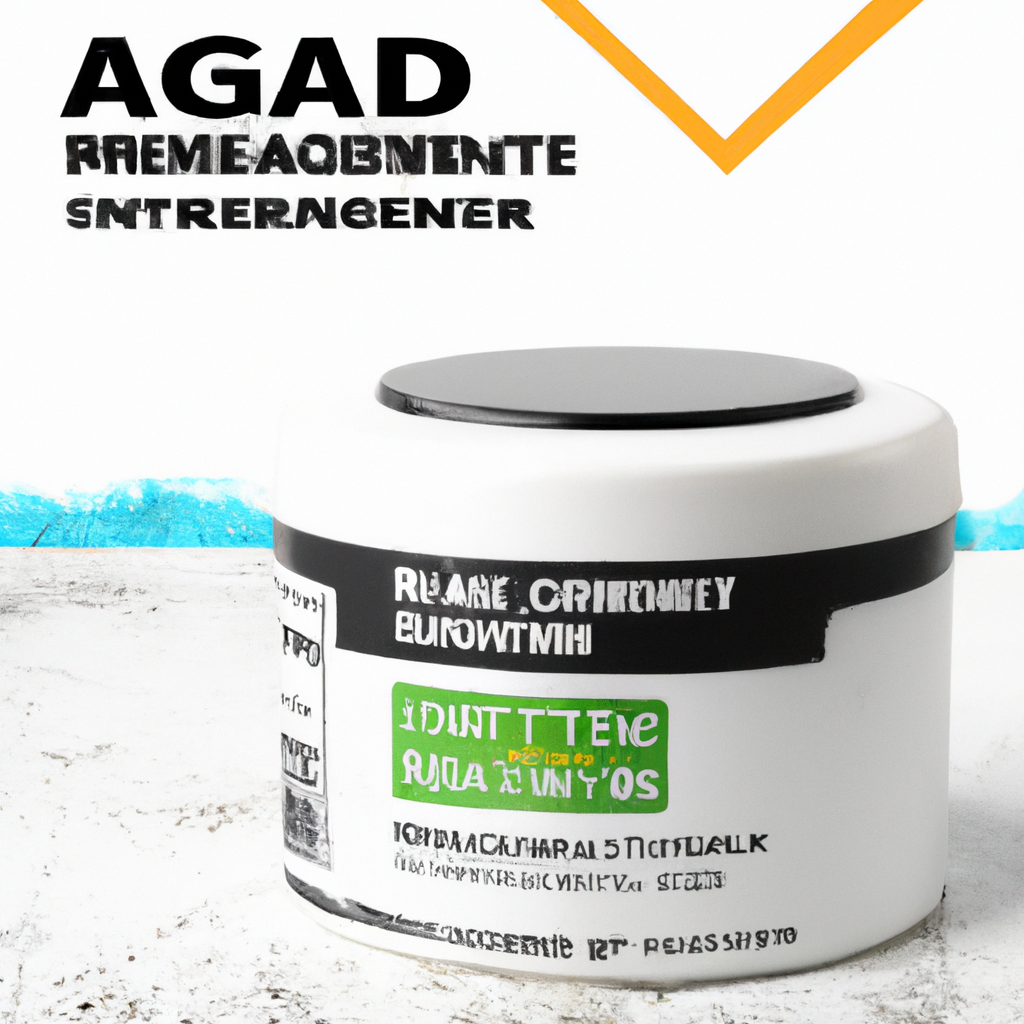-
Table of Contents
“Unlock Flawless Finishes: Discover the Ultimate Mold Release Agent of 2025!”
In 2025, the search for the best mold release agent has become increasingly important for industries ranging from manufacturing to crafts. As production processes evolve and the demand for high-quality finishes rises, selecting the right mold release agent can significantly impact efficiency, product quality, and cost-effectiveness. This introduction explores the latest advancements in mold release technology, highlighting key factors such as compatibility with various materials, ease of application, environmental considerations, and performance metrics. By examining the top contenders in the market, this guide aims to assist professionals in making informed decisions to enhance their production processes.
Top Mold Release Agents of 2025: A Comprehensive Review
As we delve into the realm of mold release agents in 2025, it becomes evident that the industry has evolved significantly, driven by advancements in technology and a growing emphasis on sustainability. Mold release agents are essential in various manufacturing processes, particularly in the production of composite materials, plastics, and rubber. Their primary function is to facilitate the easy removal of molded parts from their molds, thereby enhancing efficiency and reducing production costs. In this comprehensive review, we will explore some of the top mold release agents available in 2025, highlighting their unique features and applications.
One of the standout products in 2025 is the EcoRelease 3000, a water-based mold release agent that has garnered attention for its environmentally friendly formulation. As industries increasingly prioritize sustainability, EcoRelease 3000 meets this demand by utilizing biodegradable components that do not compromise performance. This product is particularly effective in applications involving polyurethane and epoxy resins, providing a reliable barrier that prevents adhesion while ensuring a smooth finish on the molded parts. Moreover, its easy cleanup process further enhances its appeal, making it a preferred choice for manufacturers looking to minimize their environmental footprint.
In addition to EcoRelease 3000, the SiliconePro 5000 has emerged as a leading option for high-temperature applications. This silicone-based mold release agent is designed to withstand extreme conditions, making it ideal for industries such as aerospace and automotive, where precision and durability are paramount. SiliconePro 5000 not only offers excellent release properties but also enhances the longevity of molds by reducing wear and tear. Its versatility allows it to be used with a variety of materials, including metals and thermoplastics, thereby broadening its applicability across different sectors.
Transitioning to the realm of specialty applications, the BioRelease 1000 has gained traction among manufacturers seeking a non-toxic alternative. This plant-based mold release agent is particularly favored in the food and beverage industry, where safety and compliance with health regulations are critical. BioRelease 1000 provides effective release properties while ensuring that no harmful residues are left on the final product. Its formulation is designed to be compatible with various food-grade materials, making it an ideal choice for companies committed to maintaining high safety standards.
Furthermore, the introduction of the NanoRelease 2000 has revolutionized the mold release agent market by incorporating nanotechnology. This innovative product features nanoparticles that enhance the release properties while providing a superior finish. The NanoRelease 2000 is particularly effective in applications requiring intricate designs and fine details, as it minimizes the risk of defects during the demolding process. Its ability to reduce friction and wear on molds also contributes to increased production efficiency, making it a valuable asset for manufacturers aiming to optimize their operations.
As we consider the advancements in mold release agents in 2025, it is clear that the industry is moving towards solutions that not only enhance performance but also prioritize environmental responsibility. The EcoRelease 3000, SiliconePro 5000, BioRelease 1000, and NanoRelease 2000 exemplify this trend, each offering unique benefits tailored to specific applications. Manufacturers are encouraged to evaluate their needs carefully and select the mold release agent that aligns with their production goals while adhering to sustainability practices. In conclusion, the best mold release agent in 2025 will ultimately depend on the specific requirements of the application, but the options available today provide a robust foundation for achieving optimal results in various manufacturing processes.
Factors to Consider When Choosing a Mold Release Agent in 2025
When selecting a mold release agent in 2025, several critical factors must be taken into account to ensure optimal performance and compatibility with the specific application. First and foremost, the type of material being molded plays a significant role in determining the most suitable release agent. Different materials, such as plastics, rubber, or composites, may require distinct formulations to achieve effective release without compromising the integrity of the final product. Therefore, understanding the chemical interactions between the mold release agent and the material is essential for achieving the desired results.
In addition to material compatibility, the application method of the mold release agent is another crucial consideration. Mold release agents can be applied in various ways, including spraying, brushing, or wiping. Each method has its advantages and limitations, which can affect the uniformity of application and the overall effectiveness of the release agent. For instance, spray applications may provide a more even coating, while brushing may allow for more precise application in intricate molds. Consequently, evaluating the specific requirements of the molding process will help in selecting the most appropriate application method.
Furthermore, the environmental impact of the mold release agent cannot be overlooked. As industries increasingly prioritize sustainability, choosing a release agent that is environmentally friendly and compliant with regulations is becoming more important. In 2025, many manufacturers are likely to favor biodegradable or low-VOC (volatile organic compound) options that minimize harmful emissions and reduce the ecological footprint. Therefore, assessing the environmental credentials of a mold release agent is essential for companies aiming to align with sustainable practices.
Another factor to consider is the ease of cleanup and residue management. Some mold release agents may leave behind residues that can complicate post-molding processes, such as painting or finishing. In contrast, others may be designed to evaporate completely or leave minimal residue, facilitating easier cleanup and enhancing the quality of the final product. Thus, understanding the cleanup requirements associated with a particular release agent can significantly influence the overall efficiency of the production process.
Moreover, the performance characteristics of the mold release agent, such as its temperature resistance and durability, are vital for ensuring consistent results. In high-temperature applications, for instance, a release agent must withstand extreme conditions without degrading or losing its effectiveness. Similarly, the longevity of the release agent during multiple molding cycles can impact production efficiency and cost-effectiveness. Therefore, evaluating the performance specifications of various options will help in identifying a mold release agent that meets the demands of the specific application.
Lastly, cost considerations should not be ignored when selecting a mold release agent. While it may be tempting to opt for the least expensive option, it is crucial to balance cost with performance and quality. Investing in a higher-quality release agent may lead to better results, reduced waste, and lower overall production costs in the long run. Consequently, conducting a thorough cost-benefit analysis will aid in making an informed decision that aligns with both budgetary constraints and performance expectations.
In conclusion, choosing the best mold release agent in 2025 involves a comprehensive evaluation of material compatibility, application methods, environmental impact, cleanup requirements, performance characteristics, and cost considerations. By carefully weighing these factors, manufacturers can select a mold release agent that not only meets their specific needs but also contributes to a more efficient and sustainable production process.
Innovations in Mold Release Technology: What’s New in 2025?
As we move into 2025, the landscape of mold release technology is undergoing significant transformations, driven by advancements in materials science and a growing emphasis on sustainability. The quest for the best mold release agent has led to innovative formulations that not only enhance performance but also address environmental concerns. One of the most notable trends in this field is the development of bio-based mold release agents. These agents, derived from renewable resources, are gaining traction as manufacturers seek to reduce their carbon footprint and comply with increasingly stringent regulations regarding chemical usage. By utilizing natural oils and plant-based compounds, these bio-based agents offer effective release properties while minimizing the environmental impact associated with traditional petroleum-based products.
In addition to sustainability, the performance of mold release agents has seen remarkable improvements. The introduction of advanced nanotechnology has enabled the creation of release agents that provide superior lubrication and non-stick properties. These nanostructured agents form a protective barrier on the mold surface, significantly reducing friction and wear during the molding process. As a result, manufacturers can achieve higher production rates and improved surface finishes on their molded products. Furthermore, the incorporation of nanoparticles enhances the thermal stability of these agents, allowing them to withstand higher processing temperatures without degrading, which is particularly beneficial in industries such as automotive and aerospace.
Moreover, the customization of mold release agents has become a focal point in 2025. Manufacturers are increasingly recognizing that a one-size-fits-all approach is insufficient for the diverse range of materials and applications in the market. Consequently, there has been a surge in the development of tailored release agents designed to meet specific requirements. For instance, silicone-based release agents are being formulated to cater to the unique needs of composite materials, while water-based agents are being optimized for use with thermoplastics. This level of customization not only enhances the efficiency of the molding process but also ensures that the final products meet the desired quality standards.
Another significant innovation in mold release technology is the integration of smart materials. These materials can respond to external stimuli, such as temperature or pressure, to alter their properties dynamically. For example, smart mold release agents can change their viscosity based on the temperature of the mold, providing optimal release characteristics throughout the molding cycle. This adaptability not only improves the efficiency of the process but also reduces the likelihood of defects in the final product, thereby enhancing overall quality.
As we look ahead, the role of digitalization in mold release technology cannot be overlooked. The implementation of data analytics and machine learning is enabling manufacturers to optimize their processes in real-time. By analyzing data from the molding process, companies can fine-tune their use of mold release agents, ensuring that they achieve the best possible results while minimizing waste. This data-driven approach is paving the way for more efficient production methods and better resource management.
In conclusion, the innovations in mold release technology in 2025 reflect a broader trend towards sustainability, customization, and smart manufacturing. As the industry continues to evolve, the best mold release agents will likely be those that not only excel in performance but also align with the growing demand for environmentally friendly solutions. The future of mold release technology promises to be both exciting and transformative, offering new opportunities for manufacturers to enhance their processes and products.
Q&A
1. **Question:** What is the best mold release agent for silicone molds in 2025?
**Answer:** The best mold release agent for silicone molds in 2025 is likely to be a high-quality silicone-based spray, such as Smooth-On’s Ease Release 200, known for its effectiveness and ease of use.
2. **Question:** Which mold release agent is recommended for polyurethane casting in 2025?
**Answer:** For polyurethane casting in 2025, a popular choice is the Mann Ease Release 200, which provides excellent release properties and is compatible with various materials.
3. **Question:** What eco-friendly mold release agent is gaining popularity in 2025?
**Answer:** In 2025, eco-friendly mold release agents like Bio-Release, made from natural plant-based ingredients, are gaining popularity for their effectiveness and reduced environmental impact.The best mold release agent in 2025 is likely to be a product that combines high performance with eco-friendliness, such as silicone-based or bio-based agents, which provide excellent release properties while minimizing environmental impact. Brands that prioritize innovation and sustainability, along with user-friendly application methods, will stand out in the market.



